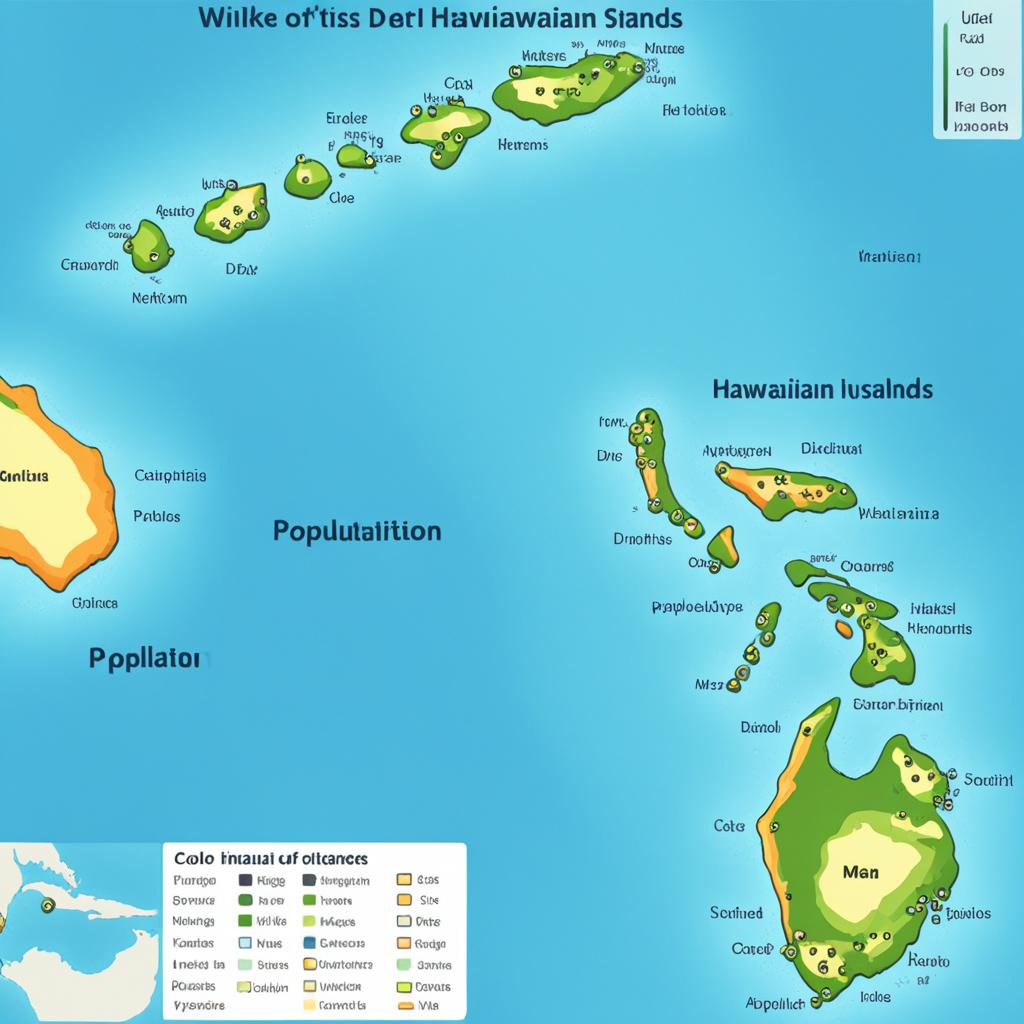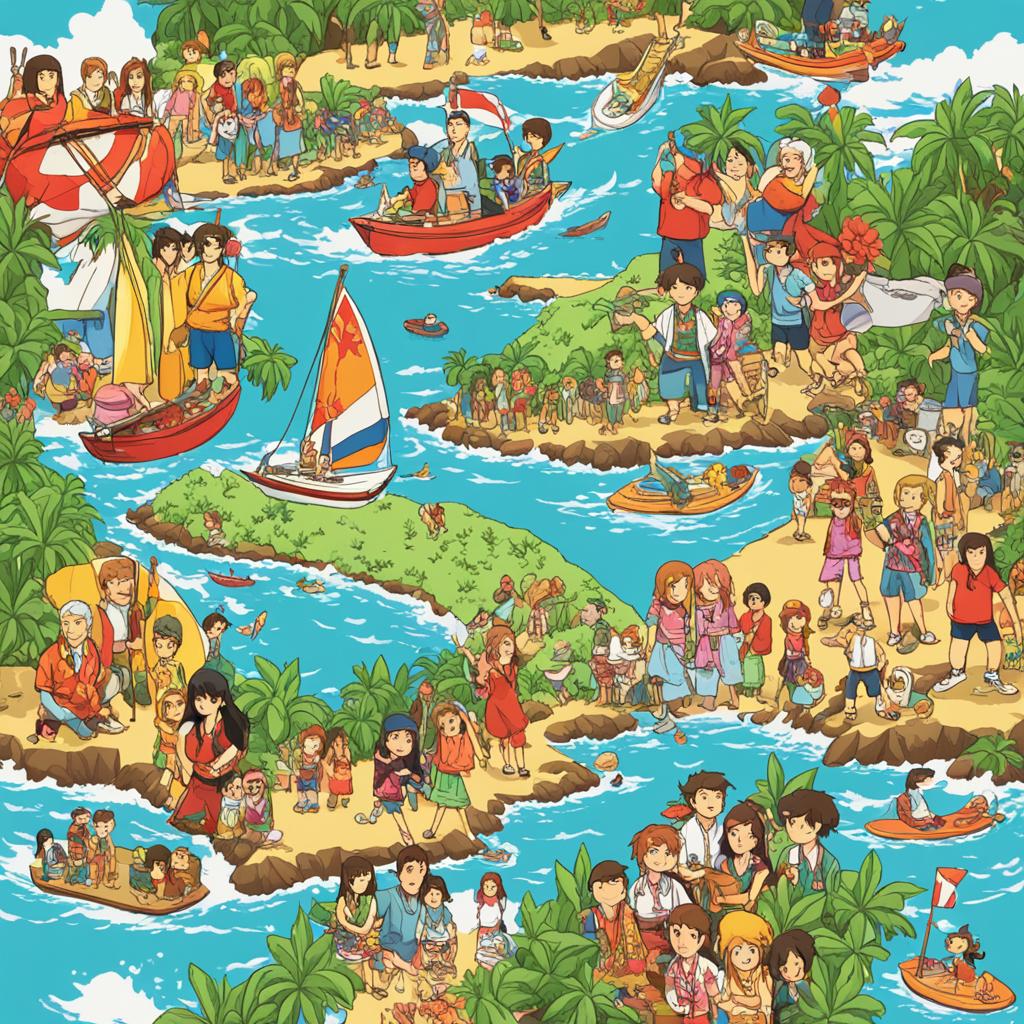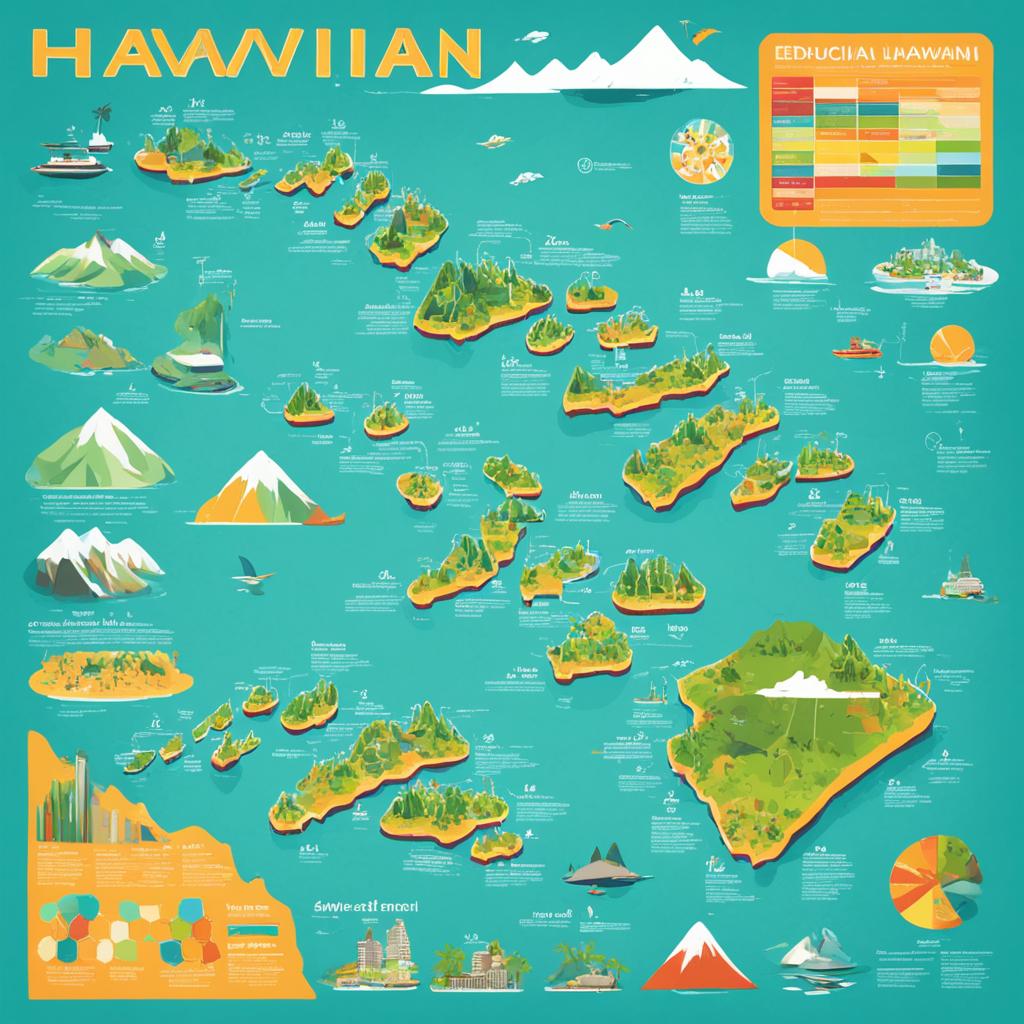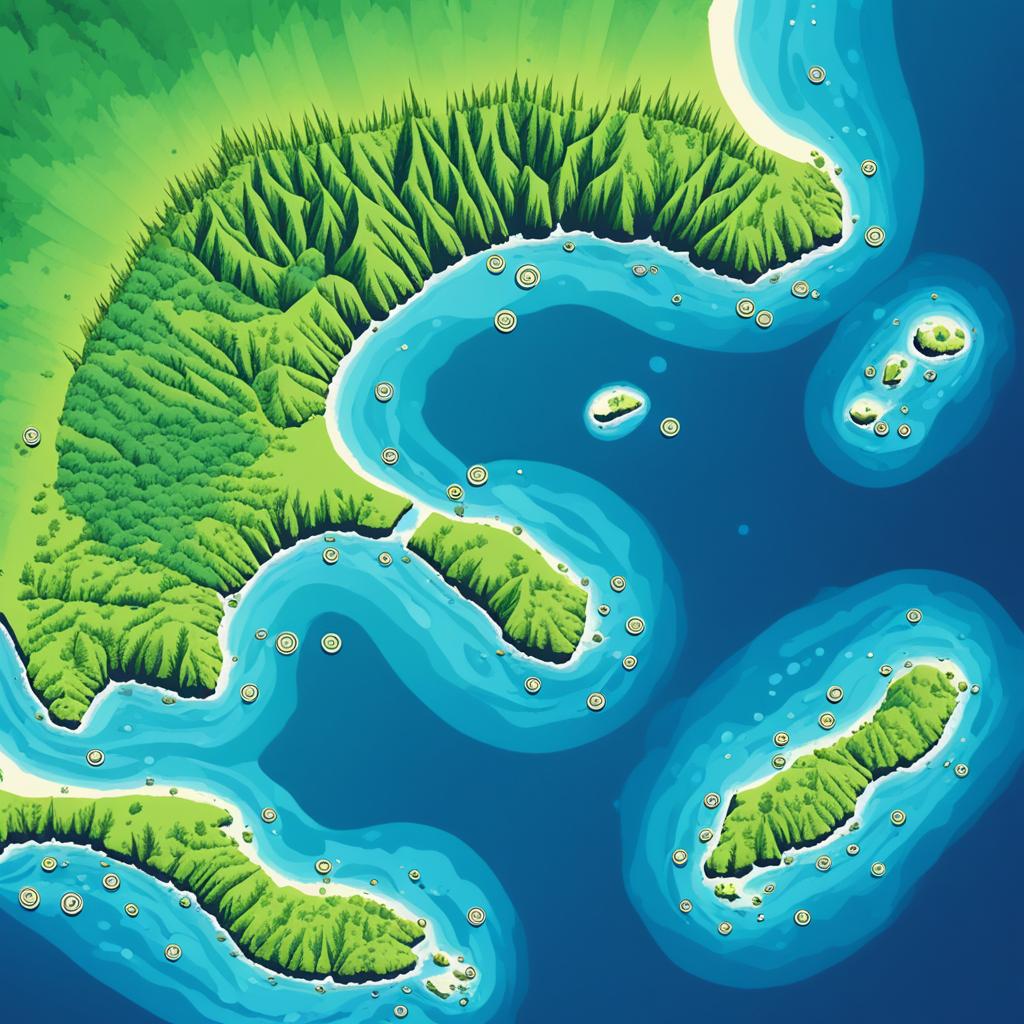Have you ever wondered about the population distribution among Hawaii’s enchanting islands? The Hawaiian archipelago is home to a diverse population with unique characteristics, and each island has its own distinct population figures. Let’s take a closer look at the population of each Hawaiian island to unravel the demographics and fascinating insights that lie within.
From the bustling urban centers to the serene shores, Hawaii’s islands have varying population sizes and densities. Whether you are exploring the vibrant city life in O’ahu or seeking tranquility in Maui’s serene landscapes, understanding the population dynamics sheds light on the unique island experience.
Hawaii Islands and Population Density

Hawaii, as a whole, has a population density of 222.9 people per square mile, ranking it 13th in the US in terms of population density. The highest populated island in Hawaii is O‘ahu, with a population density of 1,703.5 people per square mile. The other major islands, such as Maui, Kauaʻi, and Molokaʻi, have lower population densities ranging from 51.2 to 132.7 people per square mile.
The diversity in population density across the different islands of Hawaii is fascinating. While O‘ahu experiences a high population density due to its urbanization and tourist attractions, the other islands maintain comparatively lower densities. Maui, known for its beautiful beaches and breathtaking landscapes, has a population density of 51.2 people per square mile. The island of Kauaʻi, renowned for its lush green mountains and cascading waterfalls, has a population density of 132.7 people per square mile. Molokaʻi, with its rural charm and untouched natural beauty, has the lowest population density among the major islands at 51.2 people per square mile.
This variation in population density reflects the distinct characteristics and lifestyle preferences of each island. Some residents are drawn to the bustling city life on O‘ahu, while others seek a more relaxed and serene atmosphere on the less populated islands. Whether you prefer the excitement of the city or the tranquility of nature, Hawaii offers a diverse range of options to suit every individual’s preferences and lifestyle.
Hawaii Population Growth and Demographics

Over the years, the population of Hawaii has been steadily growing. From 2010 to 2020, the population increased by 5.2%. This growth can be attributed to various factors, including natural growth, immigration, and an overall positive net migration rate. The thriving economy, stunning landscapes, and vibrant culture of Hawaii continue to attract individuals from all over the world, contributing to its population growth.
The median age in Hawaii is approximately 38.5 years, with a slight gender gap favoring males. This diverse age distribution highlights the balanced representation of different generations in the state. Families, young professionals, and retirees all contribute to the unique demographic tapestry that makes Hawaii a truly diverse and dynamic place to live.
Hawaii is known for its ethnic diversity, which is a defining characteristic of the state. The largest ethnic group in Hawaii is Asian, making up 37.47% of the population. This is followed by individuals of two or more races, accounting for 24.42% of the population. The White population represents 23.69% of the total, while Native Hawaiians or Pacific Islanders make up 10.56%. This rich blend of cultures and heritage is an integral part of what makes Hawaii so special.
As Hawaii continues to grow and evolve, it is crucial to celebrate and embrace its diverse population. The unique cultural perspectives, languages, and traditions of the different ethnic groups contribute to the vibrant tapestry of the Aloha State. Hawaii’s commitment to inclusivity and respect for all its residents is what makes it a truly remarkable place to call home.
Hawaii Language and Education

In Hawaii, language diversity is prevalent alongside English as the primary spoken language. While 74.1% of the residents mainly speak English, a significant portion of 25.9% speaks other languages. After English, the most commonly spoken languages in Hawaii are Asian and Pacific Island languages.
When it comes to education attainment, Hawaii faces certain challenges. Approximately 10.11% of the population in Hawaii lives below the poverty line, which can impact educational opportunities. However, it is important to note that Hawaii has made significant efforts to address educational disparities and improve overall outcomes.
Looking at high school graduation rates, White individuals have the highest rate of completion, with an impressive rate of 97.35%. This signifies the importance of education in this ethnic group and the efforts made to ensure educational success.
Furthermore, in terms of bachelor’s degrees, White individuals also lead with a rate of 47.03%. This showcases the commitment to higher education among this demographic, highlighting the opportunities and support available for attaining a bachelor’s degree.
| Ethnic Group | High School Graduation Rate (%) | Bachelor’s Degree Attainment Rate (%) |
|---|---|---|
| White | 97.35 | 47.03 |
| Asian | 92.18 | 36.95 |
| Native Hawaiian/Pacific Islander | 88.76 | 23.93 |
| Two or More Races | 86.24 | 26.51 |
| Hispanic/Latino | 83.02 | 20.76 |
| Black/African American | 82.47 | 24.04 |
Interesting Facts:
- Hawaii has diverse language speakers, reflecting the cultural richness of the islands.
- White individuals have the highest high school graduation and bachelor’s degree attainment rates.
- Efforts have been made to address educational disparities and improve overall outcomes in Hawaii.
Hawaii Population Projections and Interesting Facts
Looking ahead, Hawaii’s population is expected to continue its steady growth, projected to increase by around 1% in the coming years. By 2020, it is estimated that the population of Hawaii will surpass 1.5 million, reflecting the ongoing appeal of the Aloha State.
Aside from its population projections, Hawaii boasts numerous interesting facts that make it a fascinating destination. One notable feature is Mauna Loa, the largest volcano on Earth, located on the Big Island. This majestic volcano is not only an impressive sight but also contributes to Hawaii’s unique geological landscape.
Furthermore, Hawaii stands out as the only state in the United States with a tropical rainforest. Its lush and diverse flora and fauna make the islands an ecological treasure. Additionally, Hawaii is entirely comprised of islands, setting it apart from other states and providing a one-of-a-kind experience for both residents and visitors.


